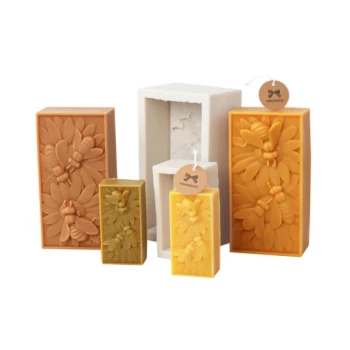At their core, single-layer bee suits rely on the thickness of their fabric for protection. These suits can range from thin, easily penetrated material to heavy-duty canvas, but they all share a fundamental characteristic: a bee's stinger can potentially pass through the fabric. Their effectiveness is a direct trade-off between the material's density and the significant heat retention that comes with it.
The central challenge of a single-layer bee suit is balancing protection with comfort. While thicker fabric offers more defense against stings, it also traps significant heat, which can lead to sweat that makes the fabric stick to your skin, paradoxically increasing your risk of being stung.

The Core Principle: Protection Through Material
A single-layer suit’s entire defense mechanism is the physical barrier of its fabric. Understanding how this works is key to using one safely.
Fabric Thickness is the Primary Defense
The quality and thickness of the material are the most critical factors. A suit made of thick, canvas-like cotton provides a much more formidable barrier than one made of a thin poly-cotton blend.
The Inherent Sting-Through Risk
No matter the thickness, a bee can potentially sting through the fabric. A stinger can penetrate if the material is stretched thin or pressed directly against your skin, leaving no air gap for protection.
Understanding the Trade-off: Heat vs. Safety
The biggest drawback of a single-layer suit is not its material, but the heat it generates. This heat creates a chain reaction that can compromise your safety.
The Problem of Overheating
Working a hive is physical, often done on hot, sunny days. A thick, non-breathable single-layer suit traps body heat and humidity, quickly leading to discomfort and even the risk of heat exhaustion.
How Sweat Compromises Protection
As you sweat, the fabric of the suit becomes wet. This causes the material to cling to your body, eliminating the protective air gap between the suit and your skin. A wet, sticky suit is far easier for a bee's stinger to penetrate.
The Need for Underlayers
To ensure a safe distance between the suit and your skin, beekeepers often wear an additional layer of clothing underneath. While this improves sting protection, it dramatically increases the heat and discomfort inside the suit.
Common Pitfalls to Avoid
Simply buying a single-layer suit is not enough. How you use it and what you expect from it are just as important.
Assuming All Suits Are Equal
The term "single-layer" covers a vast range of quality. A cheap, thin suit offers very little real-world protection and should not be considered safe for working with a defensive colony.
Neglecting the Climate Factor
In a cool climate, a heavy canvas suit can be a perfectly adequate and comfortable choice. In a hot, humid region, that same suit can become a liability, making long hive inspections miserable and less safe.
Making the Right Choice for Your Goal
Your local climate and the type of beekeeping you do should guide your decision.
- If your primary focus is affordability for brief checks in cool weather: A high-quality, thick canvas single-layer suit can be a practical choice, as long as you wear clothing underneath.
- If your primary focus is safety and comfort during long inspections in a hot climate: The heat retention of a single-layer suit makes it a challenging option; a ventilated, multi-layer suit is likely a better investment.
- If you are new to beekeeping and uncertain: Recognize that while a single-layer suit is a common starting point, its limitations in hot weather may lead you to upgrade sooner than you think.
Choosing the right protective gear is about matching the tool to your specific environment and working style.
Summary Table:
| Characteristic | Key Insight | Consideration |
|---|---|---|
| Primary Defense | Fabric thickness provides a physical barrier. | Thicker materials (e.g., canvas) offer more sting resistance but less breathability. |
| Sting-Through Risk | Bees can penetrate fabric if pressed against skin. | Maintain an air gap by wearing underlayers, but this increases heat retention. |
| Heat Retention | Non-breathable fabric traps body heat and sweat. | Can lead to discomfort, reduced safety, and heat exhaustion in warm climates. |
| Ideal Use Case | Best for brief hive checks in cool weather. | Not recommended for long inspections in hot, humid conditions. |
Upgrade Your Apiary's Safety and Efficiency with HONESTBEE
Struggling with bee suit limitations? For commercial apiaries and distributors, the right equipment is non-negotiable. HONESTBEE supplies durable, well-designed beekeeping suits and wholesale-focused gear that prioritize both protection and comfort—helping your team work smarter and safer.
Contact HONESTBEE today to explore our wholesale catalog and get tailored solutions for your operation.
Visual Guide

Related Products
- White Beekeeping Protective Suit and Hat with Fencing Veil for Beekeepers
- Cotton Beekeeping Suit and Round Hat with Veil Bee Keeper Protective Gear
- Heavy Duty Cowboy Beekeeper Hat with Visibility Veil Outdoor Professional Beekeeping Protective Gear
- Beekeeper Cowboy Hat and Veil for Beekeeping
- Professional Beekeeping Suit for Kids and Girls Childrens Bee Keeper Suit
People Also Ask
- How should a bee suit be cleaned? Protect Your Investment and Ensure Apiary Safety
- What are the essential components of a beekeeper's attire? Build Your Complete Protective System
- What are the main types of protective clothing worn by beekeepers? Choose the Right Gear for Maximum Safety
- Why is white the predominant color in bee suit designs? | Key to Hive Calm & Beekeeper Safety
- How do beekeepers not get stung? Master Bee Behavior & Protective Gear



















